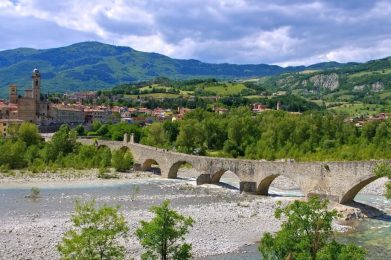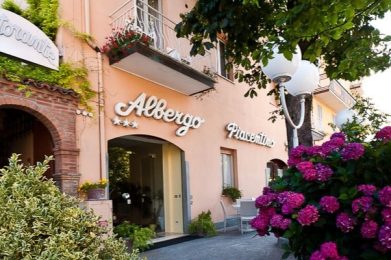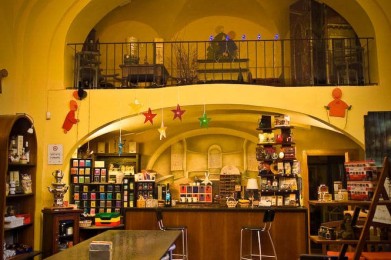Founded in 614 by St. Columbanus, an Irish monk and figure of great spirituality and culture, Bobbio Abbey is one of the most extraordinary religious and cultural monuments in Italy. It stands in the heart of the ancient village of Bobbio, in the province of Piacenza, and over the centuries has been a beacon of European civilization, a leading spiritual, intellectual and artistic reference point in the Middle Ages.
A beacon of culture in the Middle Ages
Thanks to the support of the Lombard kings Agilulf and Theodolinda, the monastery developed rapidly, becoming in the 10th and 11th centuries the main cultural center of northern Italy. Its scriptorium was among the most active in Europe: in 982 it boasted more than 700 codices, some of which are now preserved in important international libraries.
Bobbio’s fame spread throughout Europe, so much so that it was considered the “Montecassino of the North.” Other monasteries grew out of its monastic rule, extending the order of St. Columba’s network of influence far beyond Italy.
The Basilica and the Crypt
The Basilica of St. Columbanus, built between 1456 and 1522 on the remains of the earlier 9th-century church, is an architectural jewel that combines Gothic and Renaissance elements. Its rectangular apse, sober but grand decorations, and magnificent frescoes by Bernardino Lanzani (1526-1530) define its visual identity.
Of particular interest is the crypt, accessible via two flights of stairs lateral to the main chapel. Here is the 12th-century floor mosaic depicting the struggle between good and evil and a liturgical calendar-a work of high symbolic and didactic value. In the center of the crypt is the sarcophagus of St. Columbanus, made in 1480 by Giovanni de’ Patriarchis, and around it the tombs of his successors St. Attala and St. Bertulf, marked by ancient Lombard tombstones. A wrought-iron gate (9th-11th cent.) separates the sacred space from the rest of the crypt.
The Abbey Museum and the monastic complex
After the suppression of the monastery in 1803, part of the buildings were put to civilian use. Today the complex houses:
-The Abbey Museum, with exhibits ranging from Roman times to the Renaissance: among the most notable pieces are the Altar of Diana, the 3rd-century alabaster Hydria, the Theca of Orpheus, 6th-century votive ampullae and the famous silver bust of St. Columba.
-The Museum of the City, set up in the original 9th-century premises (refectory, kitchens, cellars and cloisters), with multimedia paths on the history of the saint, monastic life and Lombard geopolitics.
-The Mazzolini Museum, dedicated to 20th-century art, also housed in the abbey complex.
Also notable is the 16th-century cloister and what remains of the original 14th-century cloister: a corner of silence and beauty that evokes the contemplative life of the monks.
A living spiritual legacy
Today, the Basilica is a parish of the Diocese of Piacenza-Bobbio and remains open for worship, with celebrations on feast days. The patronal feast of St. Columbanus, November 23, draws faithful from all over the territory and pays homage to a saint who knew how to combine faith, culture and European mission.




